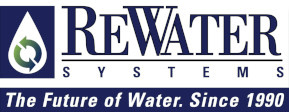Plumbing
The legal and most common sources of greywater are the showers, tubs, bathroom sinks, and clothes washer. These sources account for over half of all the water used inside a residence. Other legal sources of greywater are the tail water from non-salt generating water conditioners, Jacuzzis, and utility basins, basically anything but kitchen and toilet water. Never include salt water brine from an ion-exchange water softener.
The most cost effective sources of greywater are the regularly used showers, tubs, and clothes washer. While you may have many bathrooms in your home, usually only those producing greywater on a regular bases are cost effective to include. Reverse osmosis systems waste a lot of very good water that can be used in our systems.
If one of your extra bathrooms receives guests more often than other guest bathrooms, it might pay to include its shower/tub. If your home is in the middle of the desert relying on a well that may go dry, plumbing every legal source is probably cost effective for you.
INSTALLATION NOTE: It is always more cost effective to state on your original plumbing plan that you want certain drains separated into a greywater main line. Have that mainline taken to where you want the ReWater filter system to sit, with an overflow to the sewer, and a vent.
You should also include at least a 1” (ideally 2”) fresh water line brought to that filter location. If you do not state all this on your original plumbing plan, you’ll later be charged for a “change order” by your plumber. Change orders cost many times more than if you included it originally.
In California, use the California Plumbing Code (CPC), which is based on the Uniform Plumbing Code. There may a local amendment. Note that the CPC differs from the UPC. In some other states, the UPC is the governing code for the plumbing, and there may be a local amendment as well.
Install a reduced pressure principle device (RP device) on the fresh water source that supplies water to the filter system. Some jurisdictions feel a 2019 change to the UPC requires an air gap on that supply pipe. Either way, this water is used to backwash the sand filter and to provide supplemental water for irrigation. This is handy for when there’s not enough greywater to fulfill the entire irrigation schedule on any given day, like when you go on vacation. Without the RP device or air gap, there is a chance of greywater contacting your fresh water supply in the event of a major upstream water supply disruption that causes a reverse flow in your water lines.
The picture to the right is of a surge tank (foreground) and filter vessel (behind) in an underground vault. The black ABS pipes are unpressurized and the white PVC pipes will be pressurized while is use. Displacing a filter from the surge tank requires extending all those pipes (and some wiring too).

